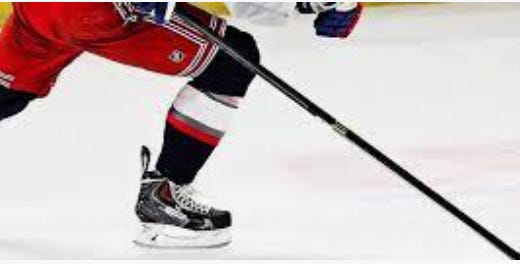In the dynamic world of hockey, the ability to maneuver swiftly and skillfully on the ice is essential. While traditional power skating drills have their place in building strength and speed, the nuanced movements that players employ during a game are often overlooked. In this post, we will delve into the common skating techniques observed during a typical hockey shift - gliding, turning, crossing over, and transitioning - and offer insights on how to hone these skills for enhanced in-game performance.
Often times when I ask a player to skate so I can film them, I can see the wheels in their brain turning to think to themselves “Ok, what did my power skating coach tell me to do.” Then they proceed to skate like this:
Then, when I watch NHL players skating in a game, I mostly see this:
A very different movement from what has traditionally been taught in an isolated environment.
If I iso cam the best player in the world, I see this:
1. Gliding or micro pushing:
The Technique:
Gliding is a fundamental skill that allows players to conserve energy while maintaining speed. It involves a relaxed posture, with the knees slightly bent and the body weight evenly distributed over both skates. Learning about pressure and how much to apply to the ice to maintain speed or slow down. In some situations, this can help you create lanes while protecting the puck, differentiate your speed to mess up D gap and give teammates opportunities to attack space.
How to Practice:
To master gliding, players should focus on balance, pressure, and stability. Drills that involve skating in nonlinear routes with minimal strides can be beneficial. The emphasis should be on maintaining a steady speed and smooth, controlled movements. Incorporating defensive pressure can also help players practice maneuvering while gliding.
Here is an example of this happening off the rush:
2. Turning:
The Technique:
Turning is pivotal for navigating the rink, evading opponents, and positioning during a game. It requires proficiency and balance on your edges, with players often leaning into the turn to maintain speed without losing control. One important aspect is to be able to have your eyes leading the turn so you can see the next play quicker, or if contact/pressure is coming your way.
How to Practice:
Simple figure 8 skating with and without the puck, focusing on smooth, controlled turns with eyes leading is the perfect place to start, and consistently work on.. The goal is to build speed and precision, enabling players to execute sharp turns under pressure.
3. Crossing Over:
The Technique:
Crossing over is essential for changing direction quickly and efficiently. It involves lifting one skate over the other while turning, allowing for a rapid shift in momentum. Executing this at high speeds while carrying the puck can be a nightmare for defenders to defend because of the constant change of direction.
How to Practice:
Players can practice crossing over by skating in circles and focusing on the technique. Both clockwise and counter-clockwise movements should be practiced to develop versatility. We mostly practice this in combination with turns, where the player can come out with fast acceleration. We emphasize the importance of the upper body’s role in initiating the turn, with the legs following suit. From there, it is important to try and use one or two crossovers back and forth while skating down the ice.
4. Transitioning:
The Technique:
Transitioning refers to the shift from forward to backward skating (and vice versa), a crucial skill for defensemen and forwards alike. It requires agility, balance, and the ability to quickly pivot and change direction.
How to Practice:
Drills that involve rapid changes in direction can help players master transitioning. One effective drill is to have players skate to a designated point, then quickly pivot and skate backward to the starting position. The focus should be on the pivot point, ensuring that players can execute this movement swiftly and seamlessly.
This is my favorite skating drill. Any guesses as to what this drill is?
It was a small area game. I filmed the player’s feet while playing.
While power skating lays the foundation, mastering the nuanced movements of gliding, turning, crossing over, and transitioning is crucial for in-game excellence. By focusing on these skills, players can navigate the ice with enhanced agility, control, and speed, positioning themselves and their team for success. Every stride, turn, and glide counts - in the world of elite hockey, mastering the art of skating the game is not just an option, but a necessity.



